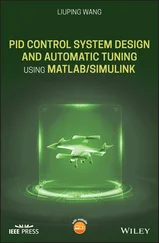1 Cover
2 Preface
3 About the Companion Website
4 1 Introduction1.1 History of Wearable Technology 1.2 Introduction to BSN Technology 1.3 BSN Architecture 1.4 Layout of the Book References
5 2 Physical, Physiological, Biological, and Behavioural States of the Human Body2.1 Introduction 2.2 Physical State of the Human Body 2.3 Physiological State of Human Body 2.4 Biological State of Human Body 2.5 Psychological and Behavioural State of the Human Body 2.6 Summary and Conclusions References
6 3 Physical, Physiological, and Biological Measurements3.1 Introduction 3.2 Wearable Technology for Gait Monitoring 3.3 Physiological Sensors 3.4 Biological Sensors 3.5 Conclusions References
7 4 Ambulatory and Popular Sensor Measurements4.1 Introduction 4.2 Heart Rate 4.3 Respiration 4.4 Blood Oxygen Saturation Level 4.5 Blood Pressure 4.6 Blood Glucose 4.7 Body Temperature 4.8 Commercial Sensors 4.9 Conclusions References
8 5 Polysomnography and Sleep Analysis5.1 Introduction 5.2 Polysomnography 5.3 Sleep Stage Classification 5.4 Monitoring Movements and Body Position During Sleep 5.5 Conclusions References
9 6 Noninvasive, Intrusive, and Nonintrusive Measurements6.1 Introduction 6.2 Noninvasive Monitoring 6.3 Contactless Monitoring 6.4 Implantable Sensor Systems 6.5 Conclusions References
10 7 Single and Multiple Sensor Networking for Gait Analysis7.1 Introduction 7.2 Gait Events and Parameters 7.3 Standard Gait Measurement Systems 7.4 Wearable Sensors for Gait Analysis 7.5 Gait Analysis Algorithms Based on Accelerometer/Gyroscope 7.6 Conclusions References
11 8 Popular Health Monitoring Systems8.1 Introduction 8.2 Technology for Data Acquisition 8.3 Physiological Health Monitoring Technologies 8.4 Conclusions References
12 9 Machine Learning for Sensor Networks9.1 Introduction 9.2 Clustering Approaches 9.3 Classification Algorithms 9.4 Common Spatial Patterns 9.5 Applications of Machine Learning in BSNs and WSNs 9.6 Conclusions References
13 10 Signal Processing for Sensor Networks10.1 Introduction 10.2 Signal Processing Problems for Sensor Networks 10.3 Fundamental Concepts in Signal Processing 10.4 Mathematical Data Models 10.5 Transform Domain Signal Analysis 10.6 Time-frequency Domain Transforms 10.7 Adaptive Filtering 10.8 Cooperative Adaptive Filtering 10.9 Multichannel Signal Processing 10.10 Signal Processing Platforms for BANs 10.11 Conclusions References
14 11 Communication Systems for Body Area Networks11.1 Introduction 11.2 Short-range Communication Systems 11.3 Limitations, Interferences, Noise, and Artefacts 11.4 Channel Modelling 11.5 BAN-WSN Communications 11.6 Routing in WBAN 11.7 BAN-building Network Integration 11.8 Cooperative BANs 11.9 BAN Security 11.10 Conclusions References
15 12 Energy Harvesting Enabled Body Sensor Networks12.1 Introduction 12.2 Energy Conservation 12.3 Network Capacity 12.4 Energy Harvesting 12.5 Challenges in Energy Harvesting 12.6 Types of Energy Harvesting 12.7 Topology Control 12.8 Typical Energy Harvesters for BSNs 12.9 Predicting Availability of Energy 12.10 Reliability of Energy Storage 12.11 Conclusions References
16 13 Quality of Service, Security, and Privacy for Wearable Sensor Data13.1 Introduction 13.2 Threats to a BAN 13.3 Data Security and Most Common Encryption Methods 13.4 Quality of Service (QoS) 13.5 System Security 13.6 Privacy 13.7 Conclusions References
17 14 Existing Projects and Platforms14.1 Introduction 14.2 Existing Wearable Devices 14.3 BAN Programming Framework 14.4 Commercial Sensor Node Hardware Platforms 14.5 BAN Software Platforms 14.6 Popular BAN Application Domains 14.7 Conclusions References
18 15 Conclusions and Suggestions for Future Research15.1 Summary 15.2 Future Directions in BSN Research 15.3 Conclusions References
19 Index
20 End User License Agreement
1 Chapter 3 Table 3.1 Biosensors, their principle, applications, and bibliography. Table 3.2 Use of biosensors in disease diagnosis.
2 Chapter 6Table 6.1 Description and notation of the different PTT-based methods.
3 Chapter 7Table 7.1 Average RoMs for different hip, knee, and ankle movements according...
4 Chapter 8Table 8.1 Sensors/devices used in health monitoring applications [3].Table 8.2 Vital signs and their scores based on the NEWS system.Table 8.3 Clinical risk associated with the final aggregate NEWS score.
5 Chapter 11Table 11.1 List of scenarios and their descriptions; LOS refers to line-of-si...Table 11.2 The carrier-frequency bands and channel bandwidths for the three B...
6 Chapter 12Table 12.1 Power consumption for Crossbow MICAz [1], Intel IMote2 [2], and Je...Table 12.2 Properties of energy-harvesting sources. Taken from [34] and [35].
7 Chapter 14Table 14.1 Popular BAN systems [19].
1 Chapter 1 Figure 1.1 Overall architecture of a BSN. Figure 1.2 Main research areas in a BSN.
2 Chapter 2 Figure 2.1 Schematic of some possible blocking of heart arteries with differ... Figure 2.2 Different brain sensory zones. ( See color plate section for color ...
3 Chapter 3 Figure 3.1 The mechanism of a piezoelectric accelerometer. Figure 3.2 Top view of a simplified accelerometer sensor from ADXL50 [49] da... Figure 3.3 A simple diagram of a gyroscope rotating clockwise. On the left, ... Figure 3.4 A simple EEG differential amplifier used in EEG or EMG systems. Figure 3.5 (a) ECoG and (b) foramen ovale electrodes denoted by pointers. In... Figure 3.6 New patch type ECG systems including electrodes and wireless conn... Figure 3.7 Electronic stethoscope; Littmann 3200 model. Figure 3.8 Pictorial illustration of the concepts of transmissive and reflec... Figure 3.9 Two different models of oximeters: (a) digital pulse oximeter use... Figure 3.10 A quartz crystal microbalance sensor; a thin film sample is coat... Figure 3.11 (a) An EnzymFET and (b) its electrical output versus urea concen... Figure 3.12 A semiconductor biosensor schematic [51]. Figure 3.13 A semiconductor biosensor schematic; backside contacts [51].
4 Chapter 4 Figure 4.1 Sample ECG and PPG signals are shown at rest and during motion. R... Figure 4.2 (a) The spectrum of one accelerometer axis; (b) the spectrum of t... Figure 4.3 (a) A breathing cycle of normal capnography waveform with all the... Figure 4.4 ECG and PPG signals are shown at rest. Different respiratory indu... Figure 4.5 A phantom subject equipped with ECG electrodes, pulse oximetry wi... Figure 4.6 Estimation of RR from simultaneous PPG, accelerometer, and ECG si... Figure 4.7 Absorption spectral characteristics of oxygenated (HbO 2) and deox... Figure 4.8 Waveform of transmitted or reflected light at two wavelengths: 66... Figure 4.9 (a) An invasive BP measurement using arterial catheter; (b) a non... Figure 4.10 The PTT can be calculated as the time between an ECG R peak and ... Figure 4.11 Patient CBT monitoring using 3M™ SpotOn™ Temperature Monitoring ...
5 Chapter 5Figure 5.1 A subject equipped with PSG monitoring system. Leg EMG electrodes...Figure 5.2 An example of sleep EEG signals and waveforms that appear in diff...Figure 5.3 (a) An NN with two hidden layers and (b) graphical model of a sin...Figure 5.4 One-dimensional convolution for (a) a stride length of 1 (S = 1...Figure 5.5 Two-dimensional convolution: (a) first sliding window; (b) second...Figure 5.6 CNN architecture for a single-channel sleep EEG signal [50].Figure 5.7 The results of sleep stage classification using CNN architecture;...Figure 5.8 A CNN architecture with EEG and EOG as its inputs [66].Figure 5.9 Multitask CNN for joint classification and prediction [67].Figure 5.10 Body postures for a subject lying down: (a) facing upwards; (b) ...Figure 5.11 QRS morphologies for different body postures using coupled elect...Figure 5.12 (a) The WISP is a 145 mm × 20 mm × 2 mm device which needs to be...
Читать дальше












